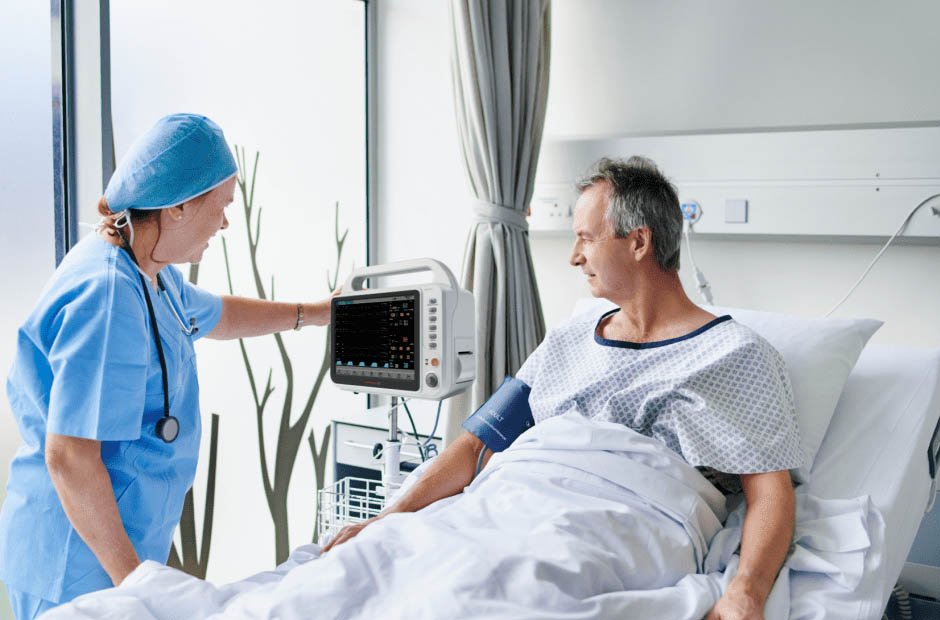In the field of healthcare, it is not just the hospital walls that bear the duty for patients’ security. Establishing efficient post-discharge monitoring plans is crucial once patients are released from the hospital to ensure a smooth transition and long-term rehabilitation. This post will discuss five crucial pointers for keeping an eye on patients after they’ve been released from the hospital, with a focus on how monitoring software can improve the patient’s experience overall.
Continuous Communication Channels
Effective post-discharge monitoring requires open and constant communication between patients and healthcare professionals. It is ensured that patients can readily contact healthcare providers with questions or concerns by putting in place a strong communication infrastructure. Virtual appointments, secure chat platforms, and routine follow-up calls can all help. Healthcare professionals can respond quickly to patients’ needs when they use software for remote patient monitoring, which enables real-time communication. Encouragement of this continuous communication helps medical staff spot possible problems early on, avoiding complications and guaranteeing the best possible outcome.
Comprehensive Vital Sign Monitoring
Vital sign monitoring is essential to post-discharge treatment since even small changes might indicate possible health problems. Healthcare practitioners can monitor vital signs, including oxygen saturation, blood pressure, and heart rate, in real-time by implementing remote patient monitoring software. A more thorough picture of the patient’s condition outside of the hospital is possible because of this ongoing observation. Healthcare workers can set settings and get notifications if any vital indicators change from the usual by utilizing cutting-edge technologies. This proactive strategy lowers the risk of readmission and improves patient outcomes by enabling prompt intervention.
Medication Adherence Support
When it comes to post-discharge treatment, medication adherence is an essential component, and any deviations from this standard might result in difficulties and regressions. When it comes to ensuring that patients take their medications as prescribed, software plays a crucial role by periodically giving them reminders. To ensure that patients take the appropriate dosage at the times that have been given to them, these reminders can be tailored based on the patient’s medication regimen. Furthermore, the program enables healthcare providers to remotely monitor drug adherence, which equips them with the ability to take corrective action if abnormalities are identified. Patient compliance is improved as a result of this proactive support, which also helps in a more successful journey toward recovery.
Health Education and Empowerment
The provision of patients with information regarding their health status is an essential component in the process of encouraging active engagement in their medical care. Healthcare practitioners can provide patients with individualized health education materials. The information contained in these publications can include advice for lifestyle choices, instructions for post-discharge treatment, and information about the patient’s specific condition. By educating patients, healthcare providers provide them with the ability to make educated decisions about their health, which ultimately results in improved self-management and a decreased need for emergency services. Not only does this method improve the outcomes for patients, but it also contributes to the overall efficiency of the management of healthcare delivery.
Data Analytics for Predictive Insights
When it comes to acquiring predictive insights about the health trajectories of patients, it is essential to maximize the power of data analytics. Various types of data, including vital signs and patient-reported outcomes, are gathered via software. You can use remote patient monitoring software from a well-known source to get accurate results. If healthcare providers make use of advanced analytics technologies, they can recognize patterns and trends that can be indicative of possible problems. Proactive interventions are made possible by predictive analytics, which enables medical personnel to address developing issues before they become more severe. Through the utilization of this data-driven strategy, the precision of post-discharge monitoring is improved, hence leading to a more individualized and efficient healthcare experience for customers.
Conclusion
A crucial element of providing comprehensive healthcare is effective post-discharge monitoring. By offering constant communication channels, thorough vital sign monitoring, assistance with medication adherence, health education, and data analytics-based predictive insights, remote patient monitoring software improves the monitoring process. By combining these suggestions, you can ensure that patients receive the care they require long after they leave the hospital by adopting a comprehensive and patient-centered approach. The function of remote patient monitoring software is becoming more and more important in determining how post-discharge care is shaped going forward as technology develops.
















